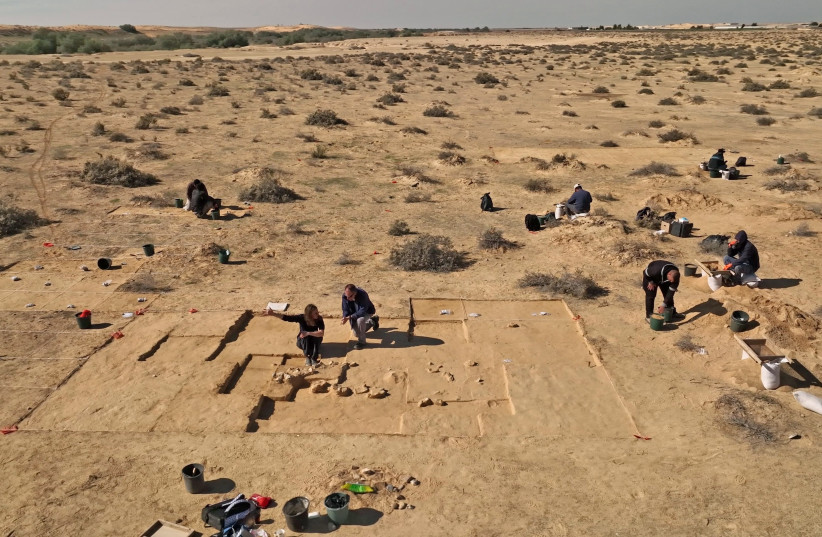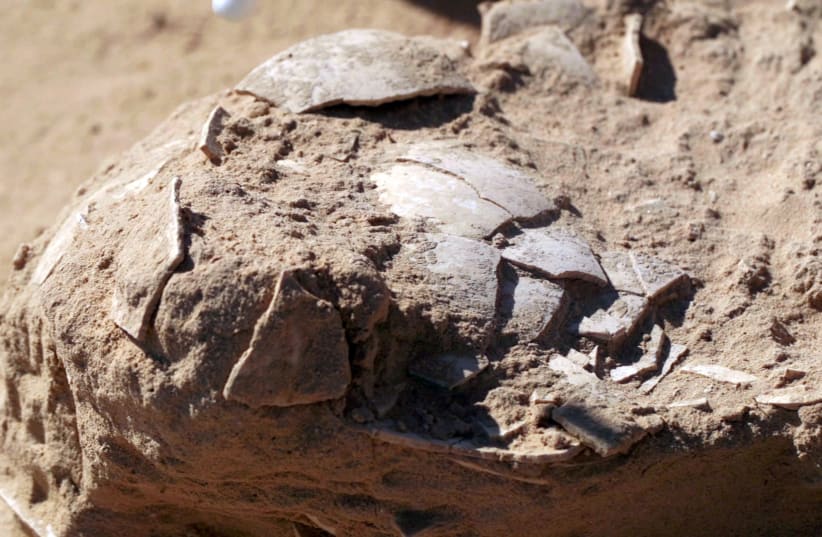An ancient fire pit, beside which lay eight ostrich eggs dating back over 4,000 years, was discovered in the Nitzana sand dunes in the Negev region, the Israel Antiquities Authority announced on Thursday.
The site may date back up to 7,500 years. It’s located on an ancient campsite spanning approximately 200 sq.m.
According to Lauren Davis, the IAA excavation director, the campsite “was used by the desert nomads since prehistoric times.”
“At the site we found burnt stones, flint and stone tools as well as pottery shards – but the truly special find is this collection of ostrich eggs. Although the nomads did not build permanent structures at this site, the finds allow us to feel their presence in the desert.”
Sand dune complications

It was easy to lose sight of these ancient campsites, as the sand dunes quickly covered them up and hid them below. They were only rediscovered with the shifting of the sand over the course of thousands of years, bringing them to the surface once more.
According to Davis, this has allowed for the “exceptional preservation of the eggs,” which has given the researchers “a glimpse into the lives of the nomads who roamed the desert in ancient times.”
Ostriches were quite common in the area at the time and date back far beyond that. They went extinct in the wild in the 19th century.
This is not the first discovery of their eggs in the wild.
What were ostrich eggs used for?
“We find ostrich eggs in archaeological sites in funerary contexts, and as luxury items and water-canteens,” said Amir Gorzalczany from the IAA, who has researched the subject in detail. “Naturally, they were used as a source of food; one ostrich egg has the nutritional value of about 25 normal chicken eggs!”
Ostrich eggs were also used in ceremonies, evident by some of those discovered having been decorated. “It is interesting, that whilst ostrich eggs are not uncommon in excavations, the bones of the large bird are not found,” explained Gorzalczany. “This may indicate that in the ancient world, people avoided tackling the ostrich and were content with collecting their eggs.”
Since these particular eight eggs were found together next to a fire pit, it is clear they did not end up there naturally, but rather were intentionally collected and brought to the spot. One of them was actually inside the fire pit itself.
“After the excavation, we will reconstruct the eggs, just like a puzzle,” Davis said. “The whole egg may tell us the species, and exactly what they were used for. As far as I’m concerned, every eggshell is worth its weight in gold!”
The findings, according to IAA Director Eli Escuzido, will be transferred from the excavation “to the new analytical laboratory in the Jay and Jeanie Schottenstein National Campus for the Archaeology of Israel, where they will undergo further observation and research.”
The relics were discovered during an IAA excavation initiated by the Jewish National Fund and the Ramat Negev Regional Council, undertaken before the development of an agricultural area for Moshav Be’er Milka.
